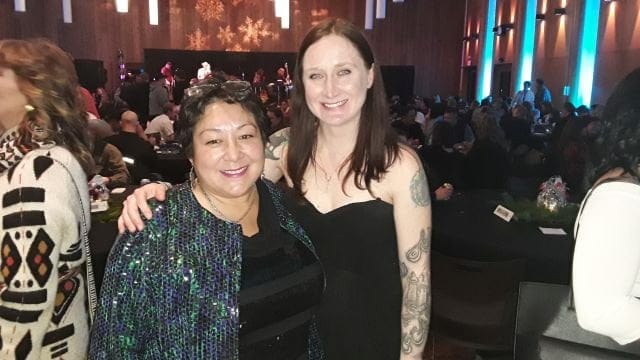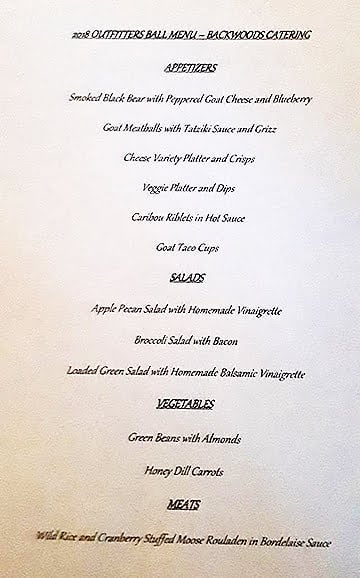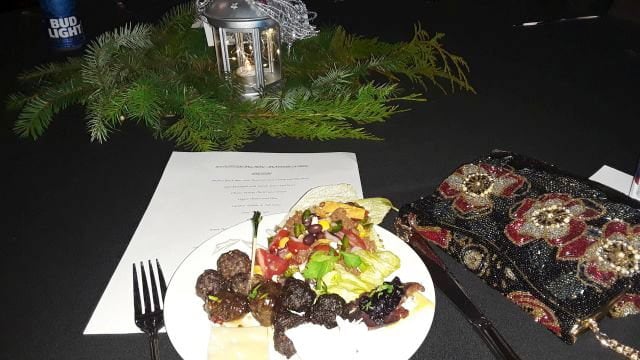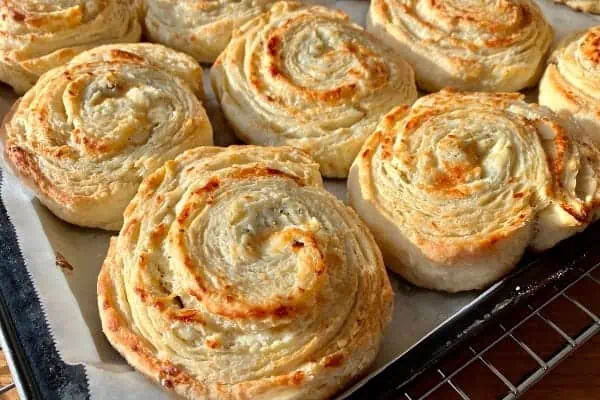What should I wear? The annual Yukon Outfitters Association (YOA) ball was held Saturday 8 December at the Kwanlin Dün Cultural Centre (KDCC). What do you wear to an outfitters ball? The two terms seem to be in contradiction to each other. I opted for a little black dress (you can never go wrong there).
I walked into the KDCC, which was decked out for the event, and I noticed immediately the contrast between the attendees. There were cowboy hats and plaid shirts, to ball gowns and babies. Not only was the attire diverse, but so was the clientele—newborns, teenagers, young adults—all age groups were present. It had the feeling of being at a family gathering but just on a much larger scale. The feeling was Come as you are, it doesn’t matter. I did feel a tad bit overdressed, though, and was quite jealous of the jeans, plaid and baseball caps.
Brenda Stehelin, from the YOA, organized the event and I was linked up to sit at the Yukon Big Game Outfitters table, which was overseen by Shawn and Sandra Raymond. Luckily, I knew some people already who were at the same table (childhood friends in Faro), Shawn, and Trudy Amos and her husband, who has helped guide with Yukon Big Game before Jordie Amos.
I was curious to meet hunters and to learn about big-game hunting from those that call it their livelihood and profession. Hunters and outfitters don’t always have the best picture painted of them (similar, I find, to snowmachine or motorized sports). The assumption is that some rednecks pile trophy heads in the back of a red truck and drive around town. But this isn’t the case. As I speak to more of the outfitters and hunters, it’s nothing like that. And if the stereotype is true, they (nor I) have not met them yet.
The business of outfitting has been a part of the Yukon for more than 100 years, and while the industry is strong, it faces many challenges today. The McDowell Group prepared a study for the Government of Yukon, in 2016, called the Yukon Outfitters Socio-Economic Profile and Situational Analysis.
Within the Yukon there are 15 registered outfitters, each with exclusive concession rights to guide non-resident hunters. Each concession includes large areas of pristine wilderness with healthy and diverse wildlife populations.
The YOA and outfitters operate on an outfitters’ code of ethical standards, noted on their website: “Each outfitter, guide and hunter has a legal and moral obligation to ensure that all edible wild-game meat from harvested animals is not wasted or left in the field. People hunt for a variety of reasons. Some hunt strictly to put wild meat on their table. Others hunt because it allows them to be closer to nature and justifies more quality time spent in the wilderness. Some individuals hunt because it is deeply rooted in the social fabric of their culture. Others hunt to bring home a trophy set and antlers. The reasons people hunt are varied, complex and often overlapping. However, the basic rule of modern hunting trips is that all edible meat from harvested animals should be eaten.”
The evening’s dishes were 100 per cent membership donations, and Lisa Gifford from Back Woods Catering served up the enormous buffet of wild game. There was grizzly, caribou, sheep, goat, black bear and moose. My favourite dish was the caribou in whisky sauce, with Yukon saskatoons. By the end of the evening, we were all in a “meat coma” and ready for a nap. The band was getting started for everyone to work off their evening meals.
Every year the outfitters ball is quickly sold out.
Getting to know a Yukon outfitter – Shawn Raymond, owner/operator of Yukon Big Game
How and why did you get started in outfitting?
I have been working in the outfitting industry my entire adult life, 25 years. [I was] raised in the small mining town of Faro. I chose the life in the mountains young over the riches of mining [he chuckles]. Wrangler’s and guides and outfitters are involved in the industry as a labour of love, an opportunity to connect with the land, often away from all the the amenities of city life, for extended summers.
Outfitting must be a tough industry to get into?There’s very few opportunities to become an outfitter in the Yukon. Areas seldom change ownership. Outfitting is about more than sustainable hunting. We are hardworking men and women and engage in communities when we are in our off-season.
How much work is involved in running an outfitting business?We actually have a very small portion of the allowable harvest of wildlife and our clients do quite well due to the full-time commitment we put forward and the lifestyle we live in the backcountry areas. Many YOA outfitting business are family owned and operated. There are a few that are not owned by families, but they are almost all run like mom and pop operations. It’s a full-time job that requires two full-time people year-round to keep the business running, and a staff during the busy hunting season to help with the workload of clients.
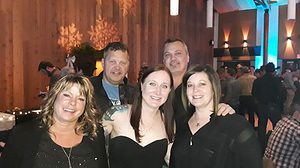
How do outfitters engage with and ensure sustainable harvesting and ties with the communities?
In some ways it’s a lot like farming: we move around our areas with a light footprint. We are the eyes and ears of places seldom visited. We are all passionate and in love with the remote backcountry and the wildlife it holds. We communicate with the local First Nations in our communities, and the Yukon Fish and Game Association, to ensure we are all on the same page, for the greater [benefit] of the Yukon. We also meet with government, at many levels, to align ourselves with changes coming forward through the Yukon and to share our input.When I bought my area, I was asked by the chief who was overseeing the sale why they should sell to me, and my answer was simple: I said, “I feel like I’ve spent my whole life trying to go back to where your people came from”—and that’s the truth.
It must be tough raising a family and running an outfitting business.My wife Sandra is also from a northern mining town from days gone, by Cassiar, B.C. Our kids all work with us in the business at different times of the year. During the winter we work with a small crew. I spend around four to six weeks travelling to the States to large trade shows, to help market, a very costly part of the operation. There’s a price we pay, as parents, to be away; and while it’s nice to be gone and get a break from the long winters, our kids and families are often without their father at the dinner table at night, and mothers are left to run the office (and single parent, for some). But we love the outdoors and the connections we have when we travel through the remote small communities, often stopping to take a few locals with us to see the fare remote areas during the winter. We help where we can, with the local trappers, to support their labour of love, as well.Some may call us rednecks when then see us with our work clothes on, at the end of a long season, [with our] long beards and worn clothes, but we are largely just ordinary people. Yes, protective of our way of life, and areas, and our camps, but also willing to lend a hand and to donate where we can, for the better of Yukoners.
For more information about the YOA, visit www.YukonOutfittersAssociation.com. You can also find out more about Shawn and Sandra’s outfitting at http://YukonBigGame.com.
*ref: analysis study: McDowell Group, 2016, “Yukon Outfitters Socio-Economic Profile and Situational Analysis”
Outfitting at a glance …
Brings tourism to the Yukon. Non-resident guided hunters spend $865 per day on Yukon goods and services (not including outfitters fees), with thousands of social media followers. It highlights the Yukon.
Puts meat on the table. Yukon outfitters provide over 75 tons of wild-game meat, harvested by clients, to community food programs, hospitals, churches, Elders and individuals who cannot harvest for themselves. In 2014, outfitters and clients donated nearly 150,000 pounds of game meat. Without these donations, recipients would have had to spend at least $1.2 million to buy an equivalent supply of beef, or get by with much less protein in family diets.*
Provides income and jobs for Yukoners. Outfitters provide 150 jobs and spend $8 million annually in the Yukon.
Keeps hunting sustainable and provide for the communities. Making sure that livelihoods can continue with long term, sustainable wildlife harvests.

